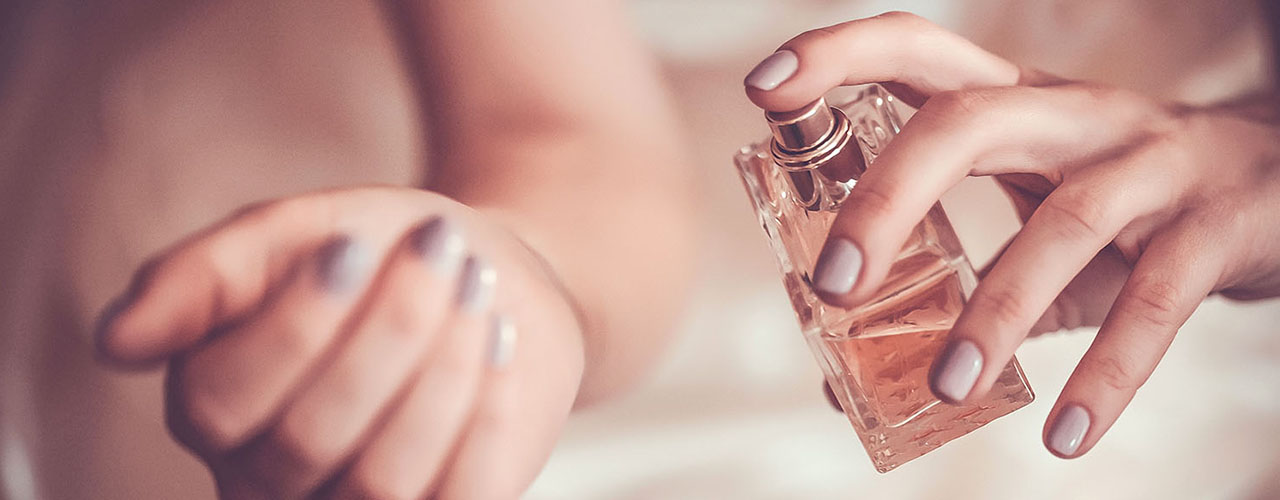
Reviewing Trends in the Global Fragrance Market

KEY POINTS
- The traditional mass-market fragrance business is struggling as consumers seek fragrance brands that are more “upmarket.” Following a boom in celebrity and mass-market fragrance sales that lasted for several years, consumers are shifting away from these products.
- We are seeing demand move toward prestige and niche fragrances, which are showing strong sales performance.
- Foot traffic is declining in US department stores, traditionally the main fragrance retail channel, and beauty and fragrance sales continue to shift to specialist beauty retail chains Ulta and Sephora, as well as to off-price retailers and the online channel.
- Other notable recent fragrance trends include growth in scented products for the home and green and aromatherapy scents and mists.
Introduction
In this report, we analyze the global fragrance market in terms of market size, sales growth, segmentation and distribution channels. We also discuss continuing trends in the market, particularly in the US and the UK.
Fragrance Industry Overview
According to Euromonitor International, the global fragrance market was worth $48 billion in 2016. In the US, the market grew by 2.6% last year, to $7.9 billion. However, certain categories, such as prestige and niche fragrances, performed better.
Most scents are produced under license by large, multinational beauty conglomerates such as Shiseido, Estée Lauder, L’Oréal, Revlon, Coty and Interparfums. A few luxury goods companies, including Hermès and Balmain, produce fragrances in-house.
Branded and celebrity fragrances under license are developed by perfumers at the main global fragrance and flavor ingredient companies. These include US-based International Flavors & Fragrances (IFF), Switzerland-based Firmenich and Givaudan, and Iberchem, headquartered in Spain. These large companies develop scents for brands at a rapid pace and some even use consumer focus groups to develop scents that are commercially viable.
Smaller privately held and independent companies produce more artisanal, niche fragrances that typically take longer to develop. The fragrance manufacturer market is becoming more consolidated over time as the large conglomerates acquire smaller niche and more artisanal brands.
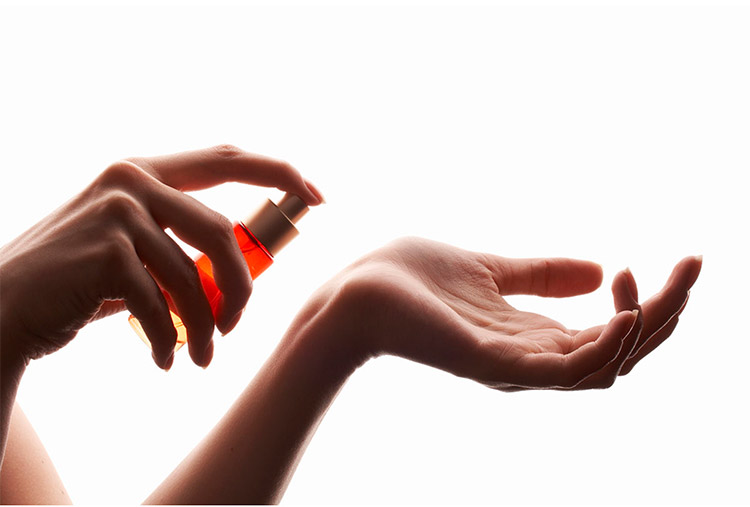
Distribution Channels
In the US and the UK, fragrances are sold through a variety of channels that offer a plethora of products. Many celebrities, cosmetics brands and apparel brands have developed their own fragrances, and perfumes can be purchased across store and online formats. However, fragrance distribution channel patterns are evolving, with some formats floundering while others take share. We note that it is difficult to obtain exact fragrance sales figures for most retailers, as those sales are typically grouped within their beauty or overall merchandise category sales.
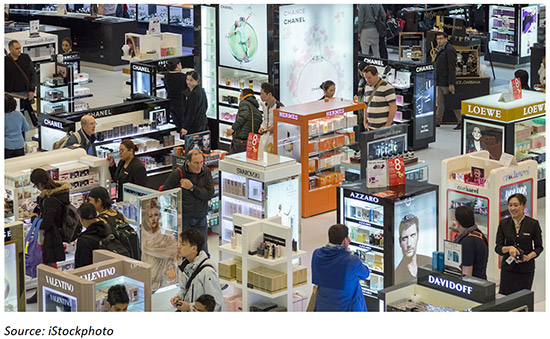
Shopper traffic has been declining in US department stores, which have traditionally been the main fragrance retail channel. Meanwhile, beauty category traffic has continued to shift to specialist beauty retail chains such as Ulta and Sephora, as well as to off-price retailers and the online channel:
- Ulta management stated on the company’s latest earnings conference call that it is seeing strong performance in fragrances. The retailer has offered exclusive product launches, such as actress Sarah Jessica Parker’s new scent, Stash.
- Off-pricers such as T.J. Maxx/T.K. Maxx and Burlington are offering more designer fragrances than in the past. Burlington reported strong beauty category sales in the fourth quarter of 2016, and management expects ongoing strength in the category, driven by improved fragrance sales. Burlington’s CEO stated on the company’s last earnings call that the retailer will focus on increasing the breadth of its designer and prestige fragrance offering in 2017.
Drugstores such as Walgreens are also striving to drive more fragrance category sales:
- Walgreens has established a fragrance section in many US stores and the company is testing new merchandising options for fragrances. Walgreens will also add 2,100 beauty advisors to stores in 2017.
- Walgreens has also launched exclusive collections such as Instyle fragrances.
Driven by ever-rising consumer demand for air travel, travel retail has emerged as a strong distribution channel for luxury fragrances in the last few years. Estée Lauder believes that its high-end fragrance portfolio will be an important factor in driving its travel retail product growth in the future.
Many specialty apparel retailers have developed beauty and personal care products, body mists, and fragrances to sell exclusively in their retail stores. These include:
- Abercrombie & Fitch and Hollister (the new Abercrombie & Fitch store concept has a fragrance “apothecary”)
- Victoria’s Secret
- Gap, Banana Republic and Old Navy
- Reiss
US mass merchants such as Walmart and Target carry lower-priced mass-market and celebrity fragrances, while cosmetics retail chains such as The Body Shop, Yves Rocher and Bath & Body Works also carry their own fragrances and scented mists.
Specialized Fragrance Shops
- The Fragrance Shop, a UK-based, privately held company, reported that sales increased by 9.4% year over year in 2016, to £105 million, and that comparable store sales increased by 5.5% year over year. The company has launched a new delivery service, which allows deliveries within 90 minutes.
Online
UK online sales of fragrances grew by 20% in 2016, to £162 million, according to The NPD Group. And Internet giant Amazon is a growing seller of cosmetics, including fragrances.
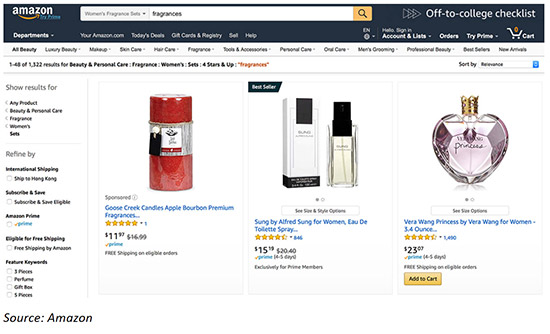
Mass-market and celebrity fragrances are also sold through TV shopping networks such as Home Shopping Network (HSN) and QVC in the US. TV shopping networks have frequently offered exclusive celebrity fragrance launches, such as Paris Hilton perfume.
Consumer Trends
Decline of Mass-Market and Celebrity Fragrances
The traditional mass-market fragrance business is struggling as consumers seek fragrance brands that are more upmarket, and prestige retailers are enjoying a renaissance in fragrance, according to The NPD Group. Mass-market fragrances sales in North America have been declining, and Euromonitor International expects such sales to decline by a CAGR of 2.5% from 2016 through 2021. The firm projects that mass-market fragrances will register flat growth in Western Europe over the same period.
Celebrity fragrance sales boomed for several years, and performing artists Christina Aguilera, Taylor Swift, Nicki Minaj, Mariah Carey, Beyoncé and Justin Bieber have all launched their own fragrances. However, consumer preferences in the US and the UK have shifted, according to The NPD Group:
- UK sales of prestige celebrity fragrances, such as Britney Spears, declined by 22% year over year in 2016, to £56.5 million.
- US-based cosmetics companies Coty and Elizabeth Arden historically built the mass fragrance category, but both have underperformed of late. Elizabeth Arden was acquired by Revlon, a beauty company with its own share of operating issues, in 2016.
Coty’s mass fragrance organic sales have contracted materially, reflecting celebrity and lifestyle brands in structural decline. Coty is planning to dispose of most of its mass-market and celebrity fragrance brands and focus on the premium end of the market.
Rise of Couture Brand Fragrances
UK premium fragrance sales increased by 8.0% year over year in 2016, to £1.6 billion. By comparison, the remainder of the overall fragrance category saw sales decline by 2.5% year over year, according to Euromonitor International.
Many luxury brands have expanded into fragrances as entry points for customers. Fragrances are often more affordable than luxury goods such as bags or shoes, allowing these brands to tap into middle- and lower-income consumer segments.
Paris-based luxury and aspirational brand perfume portfolio company Interparfums has reported strong sales growth in the last few years. The company produces fragrances under license for brands such as Dunhill, Jimmy Choo and Lanvin, and under its own ownership. Sales of Interparfums fragrance brands increased at a CAGR of 11% from 2011 through 2016.
US-based IFF, which produces luxury fragrances under license, stated that it is seeing good growth and profitability in its fine fragrances business. In early 2017, IFF acquired Fragrance Resources, a key player in the fast-growing specialty fine fragrance category.
Givaudan, a Swiss manufacturer of flavors, fragrances and cosmetics, is the market leader in fine fragrances. The company’s fine fragrances division grew sales by 7.2% year over year in 2016.
Within the prestige fragrance category, “flankers” are becoming more popular. Flankers are modern spins on classic fragrances, such as the Chanel No. 5 spin-off, No. 5 L’eau, which was launched in the fall of 2016. Flankers generated 21% of total fragrance sales in 2016, according to The NPD Group. New and lighter reimagined designer classics are particularly popular with millennials.
However, the prestige fragrance industry has also become highly promotional. LVMH-owned Sephora, which first entered the Parisian market in 1970 as a perfumery chain, stated that the prestige category has been “commoditized by discounts” and that consumers are mainly price-driven.
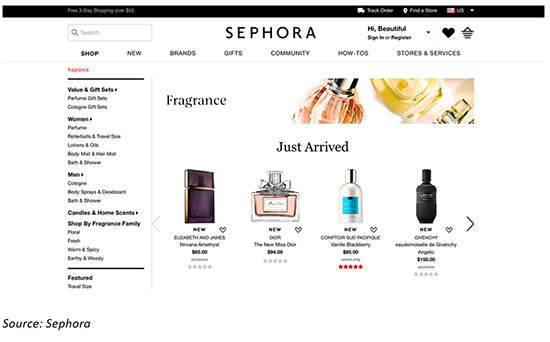
Rise of Niche Perfumes
Artisanal, niche fragrances are the fastest-growing segment of the fragrance category. These products are not associated with any fashion labels, designers or celebrities. Many are made with natural and exotic ingredients instead of synthetic elements. They are produced in smaller quantities by small companies and not distributed widely, but sold through limited retail formats. IFF has noticed a bifurcation in the fragrance market, with the very premium, artisanal brands showing higher growth than middle-market brands. Big brands are no longer only focusing on developing one-scent-fits-all blockbuster perfumes.
- Estée Lauder stated on its latest results call that artisanal fragrances were one of the growing subcategories the company had identified within fragrances. The company also stated that its designer fragrance portfolio had become much more commoditized and promotional. Accordingly, the company purchased several leading, smaller artisanal fragrance brands such as By Kilian in 2016, high-end Editions de Parfums Frédéric Malle in 2015 and Le Labo in 2014. Estée Lauder reported that its fragrance sales increased by 24% year over year in its most recent fiscal quarter.
- Other large global beauty and cosmetics companies are also focusing on the boutique fragrance trend by acquiring smaller, niche fragrance companies. Japanese firm Shiseido purchased independent perfumer Serge Lutens in 2015 and L’Oréal purchased Atelier Cologne in 2016. LVMH recently acquired a majority stake in Maison Francis Kurkdjian, a French perfumer with a presence in more than 500 retail locations in more than 40 countries.
- Spanish fashion and fragrance license company Puig acquired niche brands L’Artisan Parfumeur and Penhaligon’s in 2015.
Furthermore, technology is enabling the customization of fragrances, moving custom blending from a novelty to a mainstream service. Bespoke and personalized scents are no longer the preserve of the hyperrich. Going forward, we expect to see ongoing sales growth in smaller, more artisanal and tailor-made fragrance products.
Other Market Trends
Other trends in the fragrance market include more natural and eco-friendly products, growth in fragrances for the home, and rising demand for collections of smaller fragrance offerings.
Green Fragrances
The green movement is sweeping across the fragrance category. According to the annual Green Beauty Barometer survey conducted in 2016 by Harris Poll on behalf of beauty brand Kari Gran, 33% of American women polled claimed that purchasing all-natural fragrances was important to them.
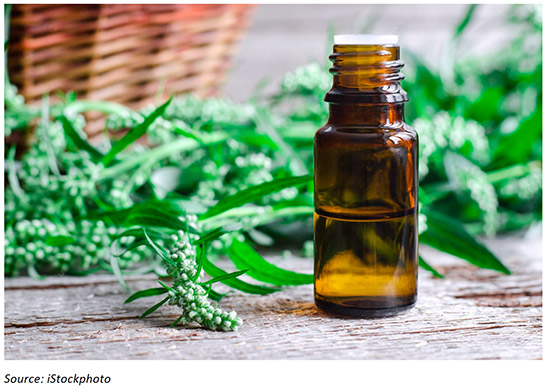
Retailers and producers are also striving for product ingredient transparency in beauty categories, including fragrances. For example, Target has set an objective of providing full product ingredient transparency for its beauty suppliers by 2020, including for fragrance producers.
In addition, many companies are responding to consumer demand for aromatherapy products, which are claimed to have healing and de-stressing properties. The herbal and floral scents commonly used in aromatherapy products are said to produce feelings of calmness and relaxation.
Home and Room Scents
Another recent fragrance trend is the growth in sales of scented products for the home. These include scented candles, automatic sprays, plug-in scented oils, wax melts and room sprays.
- Interior fragrances were a key growth driver for the fragrance category in 2016, according to The NPD Group. Diffuser sales increased by 19%, candle sales by 16% and home ancillaries gift set sales by 75%.
- In the UK, Aldi sold out of £3.99 scented candles that smelled like Jo Malone versions, in March 2017. Aldi’s management stated that demand for the candles had been “particularly strong.” Following the candles’ popularity, Aldi re-released the candles in July 2017.
- Victoria’s Secret has seen strong growth in home fragrances, and the category remains a key growth driver.
- New technologies are emerging that allow people to use an app to turn on electronic fragrance diffusers before they return home, so their home smells pleasant when they arrive.
- Likewise, an increasing number of retailers are using scent systems in stores to enhance the sensorial customer retail experience.
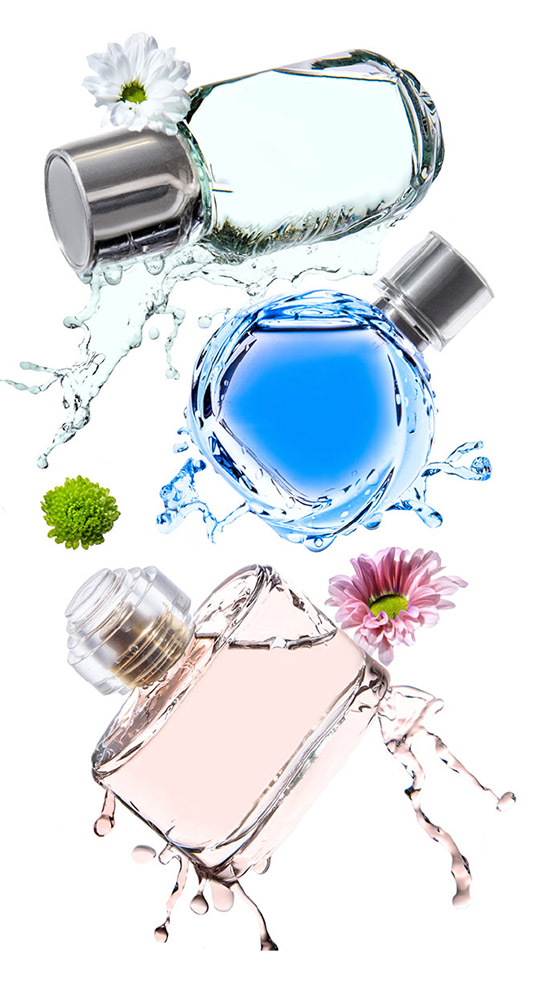 Small Fragrance Collections
Small Fragrance Collections
There is also a growing trend of millennials veering away from signature fragrances and toward smaller vials with different scents from the same luxury brand, according to the Fragrance Foundation. Perfume companies are also pushing these collections, as they are sold at higher margin markups.
According to The NPD Group, many women in the US purchase a new fragrance as often as once a month. So, smaller bottle sizes may be particularly appealing to these consumers, allowing them to try more new scents without having to purchase the more expensive, full-size bottles.
- Sales of US perfumes less than one ounce in size have increased by 16% in the last two years, more than two times faster than the overall women’s fragrance market, according to The NPD Group. US rollerball and travel spray sales jumped by 28% during the period.
- Christian Louboutin, Bottega Veneta, Jo Malone and Ralph Lauren have all offered collections of their designer fragrances.
- Scent Trunk, a US e-commerce fragrance company, offers customized scents based on personal preferences and sells them through a subscription model. Scent Trunk sends customers a sampling kit or scent test that contains six core scents, representing different fragrance types. Customers fill out an online form about the scent test, and then the company creates a custom-blended fragrance using raw ingredients sourced from small-batch producers. The perfumes are dispersed in 5 ml bottles and shipped every month for $11.95. The company stated that it targets millennials.
Marketing of Fragrances
Modern beauty companies are product innovators and media storytelling companies. Fragrance launches often require high marketing and promotional budgets to push the products, and the launches often rely on sampling. New product launches driven by lavish marketing and brand storytelling tend to increase sales and earnings.
In order to drive higher perfume sales, many retailers hold events or stage exhibits that showcase scents and encourage consumers to interact and connect with fragrances in a more unique and experiential way. These include:
- Producing events that educate consumers on the different aspects of a fragrance in an interactive and social media–friendly way.
- Playing video interviews with master perfumers, who explain how they became acquainted with their profession and how they approach creating a scent.
- Explaining what the components and ingredients of a perfume are and what region of the world the ingredients come from.
- Introducing digital tools to create personalized perfume profiles for customers, as Sephora has. The company has also created online buying guides and set up in-store demonstrations. Sephora even has a touch screen with a fan that lets consumers smell the scents that characterize most fragrances.
- Using diagnostic tools such as apps with software that recommend scents based on what consumers usually wear. The Perfume Shop’s Fragrance Finder is an example of such a tool.
Key Takeaways
- Prestige and niche fragrances have seen strong sales performance as consumer interest in mass-market and celebrity fragrances has declined.
- Artisanal, niche fragrances are the fastest-growing fragrance category. Other recent fragrance trends include growth in scented product offerings for the home, and green and aromatherapy scents and mists.
- Technology is enabling the customization of fragrances, moving custom blending from a novelty to a mainstream service.
